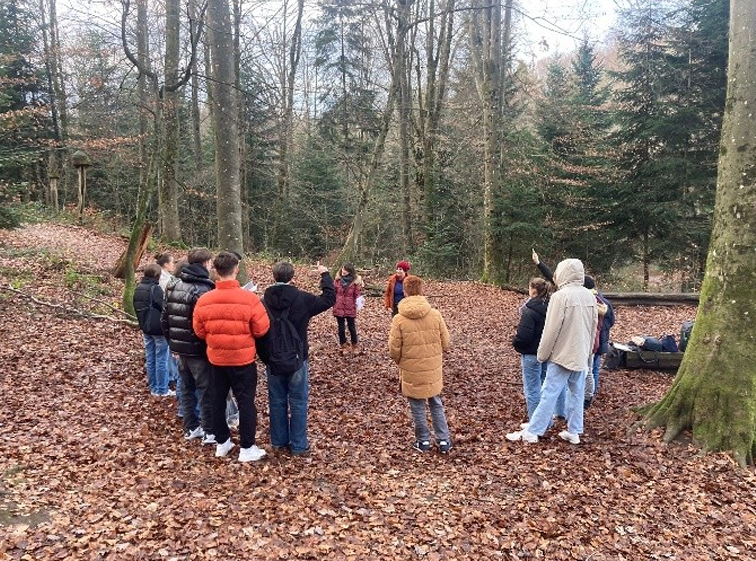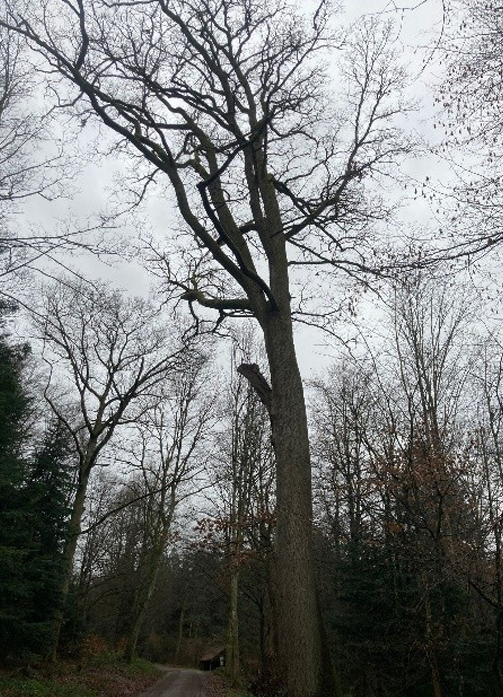“Climate impact of forests”
Description of the activity
Climate change is one of the most pressing political and social challenges of our time and it is generally known, that the forest has an important role to play in this context. This workshop allows students to approach the issue from a practical and active perspective. Moreover, the workshop should motivate them to find solutions and act – in the spirit of Education for Sustainable Development. Students get to know to the general functions of forests, measure height and diameter of a tree with professional devices, calculate the wood volume and the carbon storage of the measured tree. To get in touch with the relations, at the end they can calculate how far you can drive by an average car to blow out this amount of carbon. Through this the pupils get to know the importance of the forest for different areas of human life and the environment, they get in touch with the forestall measuring devices and they especially learn about the importance of forests as a carbon storage or carbon sink. The workshops can be used as a starting point for open schooling projects concerning sustainability and the carbon circle. The Lighthouse Activity consisted of three parts.
Part A was a discussion about the importance of forests. We discussed the different functions forests can fill out at the one hand linked with the nature and the ecosystem (habitat for plants and animals, production of oxygen, storage and filtration of water, storage of carbon) or on the other hand directly linked to human life (improvement of air quality, wood production, protection against noise/avalanches/soil removal, recreational area, balancing the microclimate). Some of these functions are surprising for laymen for example protection against noise.
Part B was the measuring time. After a short introduction in the devices pupils did measure height an diameter of selected trees in little groups. Therefore, they used a tape for diameter and the “Vertex” for height. This is an electronical measuring device which can determine distances and angles. With the help of mathematical laws in right-angled triangles the device calculates the tree height out of the angle and the distance between measuring point and tree. The aim of these measurements was to calculate the volume of the tree.
Part C was the calculation part, where the pupils worked with their measurements. With given formulas they were able to calculate the wood volume of their tree. Using wood density and values for carbon content per m³ wood it was possible to find out the carbon content of their measured tree. To get an idea of the size of this carbon amount, we finally calculated the distance you can drive by a average car burning petrol. Within this project we touch on different subjects such as Biology, Earth Science, Environmental Science, Chemistry, Physics, Mathematics and so we show the interdisciplinary nature of everyday problems.

Foto: ALU

Foto: ALU
Description of implementation
The implementation phase of the project involved preparing project advertisements and sending them to schools at the beginning of the school year. After receiving positive feedback from the school, the next step was to correspond by e-mail with the teacher, who is interested in the project. We started the implementation of our “lessons in forest” lighthouse activity
with a biology course (10th grade) of a bilingual school in December 2023. During the preparation meetings, topics such as project content, project duration, place and time were discussed. At this stage, we modified our concept of the project according to the wishes of the teacher. For example, the teaching language of the project was determined in English instead of German.
In advance of the LHA we developed two different excursion guides: one for the pupils to have all the formulas and necessary information for the measurements and calculations. One for the teacher to have more additional information for preparation for the workshop. The workshop was carried out in the forest of the city of Freiburg and lasted 105 minutes. The teacher and the students traveled with public transport, so we had to orientate at the bus schedule. The introduction and discussion part we did in one big group. For the measuring and calculation part the group was divided in several smaller groups of 3 or 4 students.
Outcomes
The workshop helped students to:
- … become more informed about the general functions of our forests
- … see that physical and chemical laws like atomic weight and density can easily be used to calculate important things.
- … get to know, that you have to use knowledge from different scientific subjects to get results to relevant questions.
- … recognize how living or dying forests affect the climate change over their individual carbon content.
Final remarks
We hope that the interdisciplinary workshop on Sustainability has a positive effect on students’ attitude towards science and has opened a door to thinking about the importance of forests in general and especially concerning the climate change.
We are very satisfied with the covered topics and experiments of the workshop. As we implement it more often, we will try to optimize some details to make some things a bit easier to understand. 105 minutes was a bit short for everything we covered, so we will try to adapt the time when possible.
